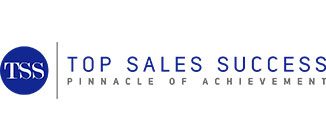“I’m impressed…Great presentation….”
“Wow – really liked what we saw and we will be in touch if we need to take things further….”
Are the above quotes from a prospect good or bad? A continuation or and advance?
In this article, we will review:
- What is an order?
- What is an advance?
- What is a continuation?
- No Sale
- Setting call objectives
Orders
- Where a customer makes a firm commitment to buy.
- We are 99.99% that we are likely to buy – is not an order.
Advances
- Where an event takes place – either in the call or after it that moves the sale forward toward a decision. Typical advances:
- A customer’s agreement to attend an off-site demonstration
- A clearance that will get you in front of a higher level of decision maker
- An agreement to run a trial or test of your product or service.
- Access to parts of the account that were previously inaccessible to you.
- These are agreements with the customer – an action – that moves the sale forward toward the ultimate decision.
- Key element in an advance involves an ACTION that moves the sale forward.
- In larger sales, a common objective of closing would normally be to obtain an advance and knowing what advance you can realistically obtain from the call.
Continuations
- Where the sale will continue but there is no specific action that has been agreed upon by the customer to move it forward. There is no agreed action yet they do not involve a NO from the customer. Typical continuations:
- “Thank you for coming…why don’t you visit us again the next time you are in the area.”
- “Great presentation – loved it – let’s keep in touch….”
- “Wow – really liked what we saw and we will be in touch if we need to take things further….”
- Other examples – you might find yourself in situations like the below, over the course of several months:
- From an early contact, “They mentioned knowing client XYZ. I emailed them some information.”
- At an on-site visit, “I was able to get useful data.”
- From a meeting, “It went well — they loved my demo.”
- On another visit, “We met for breakfast and I followed up with literature.”
- Upon visiting, “They were impressed by our stuff, and I offered them a sample plan.”
- From another contact, “We conducted another demo.”
- From another visit, “We strengthened our relationship over coffee.”
- After yet another call, “I checked if they wanted a proposal and costing, and they said yes.”
- All of these are continuations — not a single one of them counts as an advance because they didn’t cost the client anything significant. Continuations indicate only interest and curiosity — which are nice, but not a good enough reason to keep investing your time and energy.
- In none of these cases did the buyer agree to a specific action – so there is no concrete sign that the sale has progressed.
- These are unsuccessful sales calls. Signs to look for is when the buyer says – “I’m impressed…” “Great presentation….”
- Usually, the buyer uses these phrases at the end of a call as a polite way of getting rid of an unwanted seller. Or want to “keep you on a string” as negotiation leverage.
- Closing successes need to be measured by actions – not my nice noises.
No Sales
- Final category – where the customer actively refuses a commitment.
- Will not agree to a future meeting.
- Denies your request for an advancement – like seeing a more senior buyer…
- Actively denies your principal call objective.
Setting call objectives:
An advance, on the other hand, gives you reasonable assurance of a positive outcome. Without an advance, the sale cannot move forward.
So, your objective for every sales encounter should be some sort of an advance — not a continuation.
A continuation that is frequently mistaken as an advance is when the prospect asks for a proposal. Remember, this only indicates curiosity about pricing. It doesn’t require any commitment or effort from the potential client, so it’s an easy request for them to make. Don’t read too much into it!
- Ruthlessly question your objectives for each call.
- Don’t be content with objectives such as – “to collect information” or “to build a good relationship”. Of course, these are important objectives, but after all, every call affords the possibility to collect information and improve relationships. But objectives of this kind are not enough. They lead to continuations not to advances. They may lead you to close for the wrong objective.
- In call planning, always include objectives that result in specific action from the customer.
- Objectives like – “To get the prospect to a demonstration” “To meet with the boss”.
- Looking for advances not continuations.
Source Document for this article: Neal Rackham (1988) SPIN Selling Huthwaite, Inc. McGraw-Hill Book Company


